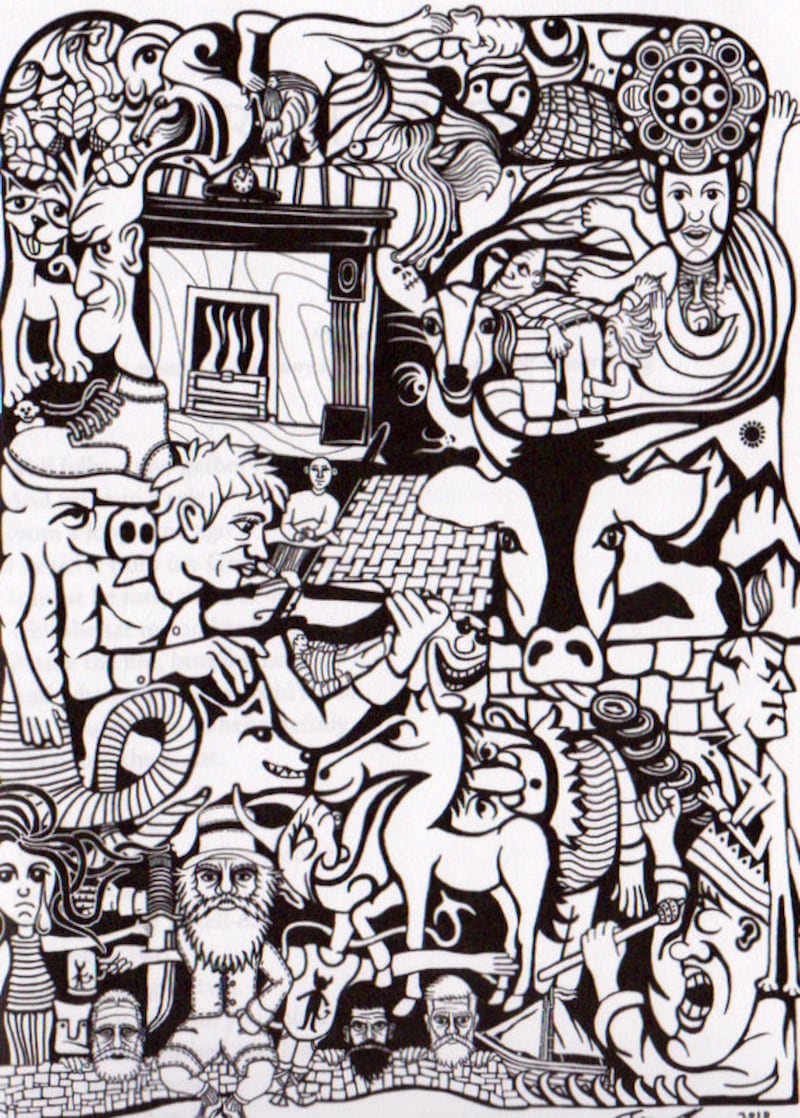The grand sweep of history comes alive in Richhill, A Portrait of an Ulster Village (Richhill Buildings Preservation Trust, £17) by Brett Hannam. Tragic set pieces marking the watershed dates of Irish life and death from the 1641 rebellion, the 1798 uprising and the Great Famine, up to the world wars of the 20th century and political upheaval at home, are all contemplated with the impact these had on the village linked to the wider Co Armagh and Ulster context.
Richhill has always punched above its weight and over the centuries has benefitted from multifaceted industrial developments. The middle decades of the 18th century saw the linen boom which was followed by a thriving furniture trade in the middle of the 19th century and led to the village being called “Furnitureville.”
Not for nothing is Armagh known as the Orchard County and apples have been cultivated since the Middle Ages. The high calcium content of the soil has encouraged fruit trees and led to the production of Old Time Irish Marmalade, the most popular of its type in Ireland made by the Fruitfield company which can trace its pedigree back 140 years.
In an afterword to this lively study, the author states that some historians think that “the length of her memory has been the curse of Ireland and it would be a help if she forgot more than she remembered”. But he concludes that while this amnesia may be useful in some areas, it does not apply to Richhill – a place that has found a chronicler-in-chief who has immersed himself in an impressive kaleidoscope of subjects.
The Sidhe, calliaches, pookas, clurichauns and magic cures all feature in the 32-county Irish Gothic Fairy Stories (History Press Ireland, £17.99) by husband and wife team Steve and Paula Lally. The gothic draws on the imaginings of writers such as Edgar Allan Poe, Sheridan Le Fanu and the Dracula author Bram Stoker. While Steve carried out the drawings, intricate artwork by James Ryan involved creating a set of ornate borders and a coat of arms for each county, taking inspiration from the master of fairy illustration Arthur Rackham.
Covering a wide geographical spread, the tales derive from a variety of sources, including the Schools’ Collection of the Dúchas Archive at UCD. Some have been documented elsewhere and in the best tradition handed down to a new generation. With a scattering of poetic epigraphs, the authors do justice to each county through a retelling. One story features the leprechaun whisperer from Carlingford, Kevin Woods, who lobbied the EU to create protected species for leprechauns under the European Habitats Directive. They were successfully added to the EU list because they couldn’t prove they didn’t exist.

Local dialect
In parts of Ireland, local dialect has survived against the odds, and specific words and phrases of Yola, meaning "old", are still spoken in southeast Wexford. Yola and the Yoles (€10) by Aidan Sullivan explores the complex nature of this curious old English dialect and discusses its origins and the people who spoke it.
Introduced by Norman invaders in 1169, it lasted for centuries with its own language for songs, dress, food, drink, dance and customs. The soldiers and settlers who brought Yola to Wexford came from the west of England and Wales but there were also Flemish, Manx and French among them, while some Irish was absorbed into the Yola mix. It was spoken with a slow drawl by fishermen, farmers and local people in the Barony of Forth right up to the 1970s, while in 2018 Liam O’Neill won a Hennessy Literary Award from The Irish Times for his poem written in Yola.
In the early 19th century, Jacob Poole a Quaker farmer, collected 1,700 Yola words and the book includes a glossary of colourful terms and phrases such as “bockety” (unsteady), “dinna fare a cauls” (don’t frighten the horses), “a smaddereen of aal” (measure of ale), while a “gorseyjack” is a man about town.
Surprisingly, another place with its own dialect is Westport. In his engaging personal collection of essays, Westported (PublishNation, €8.90) Blaise Cronin, states that there is, or once was, a Covey dialect, sometimes referred to as the "Covey cant" or Westport slang. The word for a girlfriend or woman was "doner", and if someone said "lamp the sham with the doner", it meant "look at yer man with the girl".
The author describes himself as an outsider looking in and considers everything from small coffee shops to the Big House. For him, the local speech “sounds like a colony of demented chipmunks fighting for airtime.” He finds that beneath the genial surface, Westport is not immune from the kind of petty grudges and squabbles that keep small town solicitors busy. But when the blazing sun comes out over Clew Bay then bonhomie is the order of the day.





















